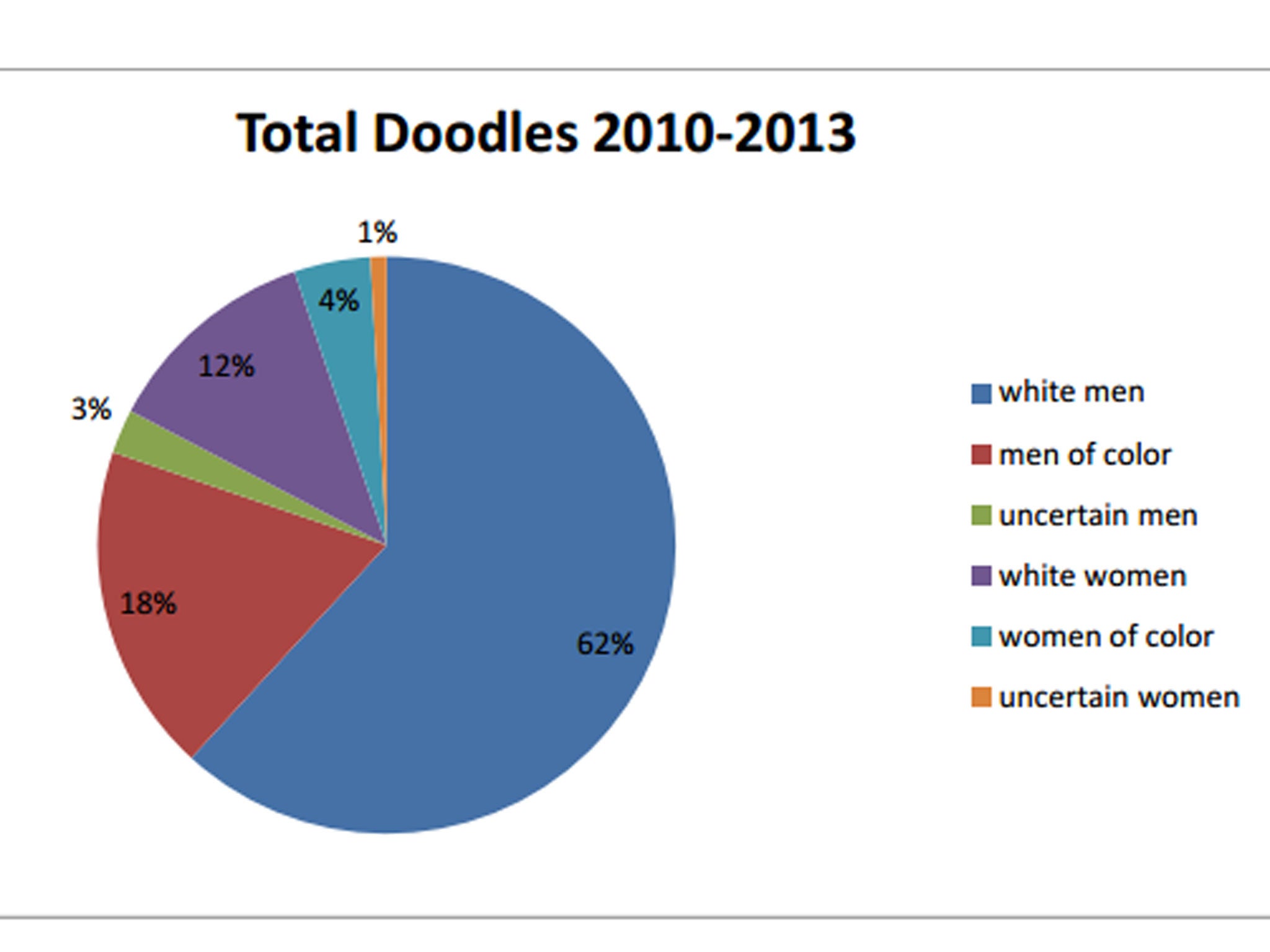The Independent's journalism is supported by our readers. When you purchase through links on our site, we may earn commission.
Are Google Doodles sexist and racist? Report says the graphics under-represent women and favour white men
Research by SPARK Movement showed that white men account for the overwhelming majority of people honoured in Google Doodles

Your support helps us to tell the story
From reproductive rights to climate change to Big Tech, The Independent is on the ground when the story is developing. Whether it's investigating the financials of Elon Musk's pro-Trump PAC or producing our latest documentary, 'The A Word', which shines a light on the American women fighting for reproductive rights, we know how important it is to parse out the facts from the messaging.
At such a critical moment in US history, we need reporters on the ground. Your donation allows us to keep sending journalists to speak to both sides of the story.
The Independent is trusted by Americans across the entire political spectrum. And unlike many other quality news outlets, we choose not to lock Americans out of our reporting and analysis with paywalls. We believe quality journalism should be available to everyone, paid for by those who can afford it.
Your support makes all the difference.For many people they are a light-hearted and fun addition to their time on the web – serving as a both a source of fun facts and perhaps a bit of a distraction during the working day.
But how do Google Doodles fare when it comes to epitomising our increasingly global and transnational world?
Not particularly well, according to a female activist group that has criticised Google for underrepresenting women and mainly focusing on white men in its Doodles.
Between 2010 and 2013, Google Doodles posted around the world honoured 445 people, 368 of whom were men, compared to just 77 women, according to a report by SPARK Movement, which describes itself as “a girl-fuelled, intergenerational” campaign group.
Men accounted for 83 per cent of all people recognised in Doodles, while women were acknowledged only 17 per cent of the time.
And of these men, 75 per cent were white, which means that white men accounted for 62 per cent of all people that Google paid tribute to during the three-year period.
In comparison, 70 per cent of the women featured were white, thereby accounting for 12 per cent of the individuals represented overall.
Non-white people were acknowledged in less than a quarter of cases (23 per cent) and women accounted for just 19 per cent of this figure.
This means that a mere 4 per cent of non-white women were recognised overall.
Overall, 74 per cent of the total Doodles acknowledged white people.
When these figures were broken down further, global Doodles – Doodles seen everywhere around the world – honoured white people in 91 per cent of cases.
Of this figure, 84 per cent which men, which means that white men were seen in over three quarters (76 per cent) of global doodles.
SPARK Movement has launched the hash tag #DoodleUs and is urging Google to correct this “imbalance”.
SPARK activist Celeste said: “Google Doodles may seem light-hearted, especially when they’re accompanied by quirky games and animation, but the reality is that these doodles have emerged as a new manifestation of who we value as a society—a sign of who ‘matters.’
"Just like statues, stamps, and national holidays, you know that if someone is featured on Google’s homepage, they’ve done something important.”
Ryan Germick, Doodle Team Lead, told the Mail Online: “Women have historically been underrepresented in almost all fields: science, school curricula, business, politics -- and, sadly, doodles.
“We’ve been working to fix the imbalance in our doodles -- this year we're hoping to have women and men equally represented.
“So far this year we’ve done doodles for as many women as men, a big shift from figures below 20% in past years.”
The research was carried out using Google’s Doodle database at www.google.com/doodles and focused on Doodles that celebrated individuals, but not festivals or holidays named for people.
SPARK Movement collected information about the person’s race, gender, and geographic location in the world, which parts of the world the Doodle appeared in, and what the person achieved in their lifetime.
It looked at the total number of Doodles of people published from 2010 to 2013 across all regions and countries. It also included both global Doodles and regional Doodles (Doodles only visible in certain countries and regions).
There were 445 total Doodles honouring people between 2010 and 2013.
Join our commenting forum
Join thought-provoking conversations, follow other Independent readers and see their replies
Comments